If you’re going to be breeding a gilt or sow via artificial insemination, then tracking her heat cycle is an absolute must in order to time it properly! When you receive the semen in the mail, it will be mixed with an extender that allows it to stay viable for longer than a week when kept in the proper conditions. But, you need to know when to expect her heat cycle so that you can order it and have it ready on hand for when she is ready to be bred. The ovulation window is short, and semen providers typically have specific collection days so it isn’t something that you can just wing at the last minute.
The heat cycle in gilts and sows averages every 18-21 days. Depending on the particular gilt/sow and the time of year, this can fluctuate. Prior to breeding Big Marie last fall, I tracked her cycle for a few months leading up to the month I planned to inseminate her. She was like clockwork and would go into standing heat every 21 days on the dot. This allowed me to plan and order the semen so I had it a couple days before breeding to keep it as fresh and viable as possible.
There are two “phases” of the heat cycle that can be observed physically and behaviorally:
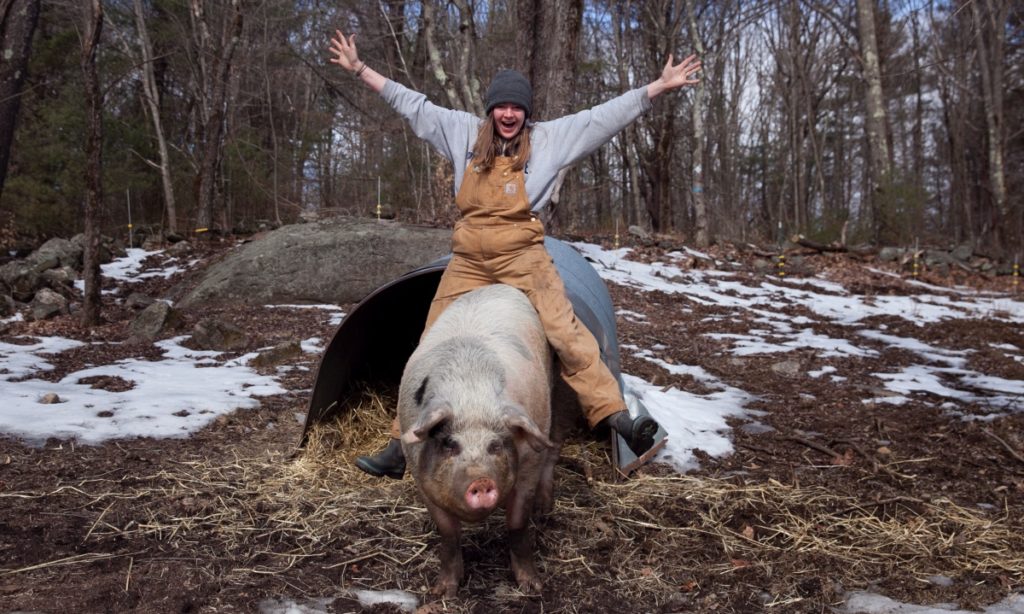
Proestrus
Proestrus is essentially the early stages of heat where estrogen and hormones are being released in preparation for ovulation. Depending on the gilt/sow, this can occur anywhere from 2-3 days prior to estrus. There are many physical signs associated with this that can vary in their obviousness depending on the individual pig, and typically tend to be more apparent in a gilt. These signs will give you a heads up that she will be fertile in just a few days and you better have everything ready and on hand for insemination:
- Reddening and swelling of the vulva due to increased estrogen levels
- Increased vocalization and restlessness, aggressiveness, and fiestiness! If there are multiple sows and gilts in with each other, you may see them trying to mount each other
- Increased interest in males whether they be pig or human – this is the time that my husband tries to stay away from Big Marie as she gets particularly fiesty around him!
- Clear sticky discharge that drips from the vulva and stickiness will increase over the course of proestrus period.
- Can have reduced appetite and may go off feed
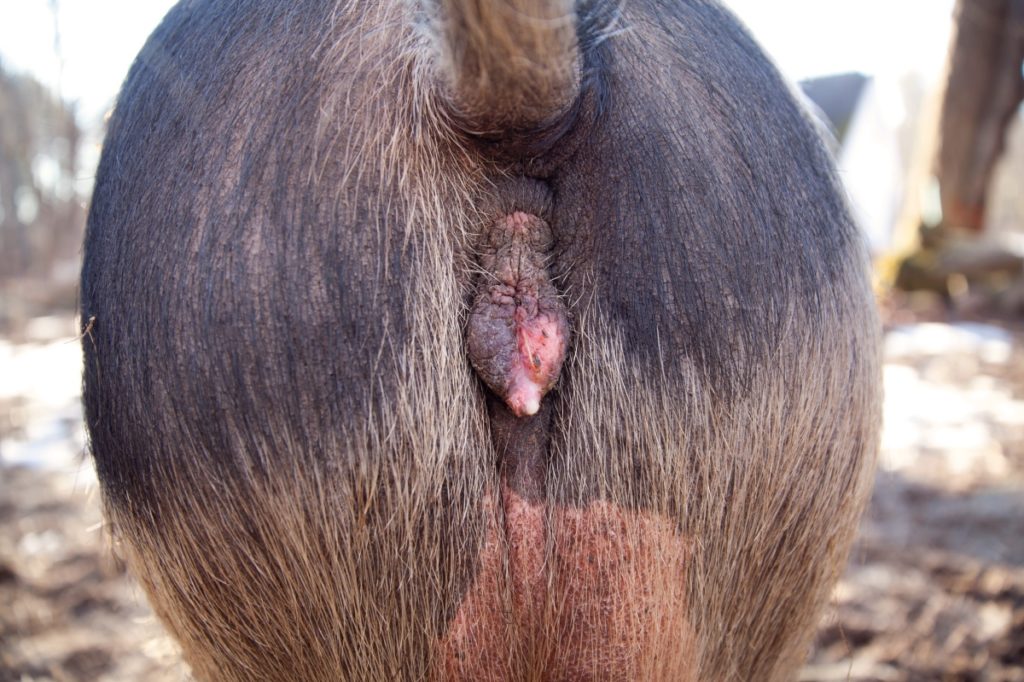
Estrus
Estrus is the phase of the heat cycle that is referred to as “standing heat”, and occurs immediately after proestrus. The follicular stimulating hormone, leutinizing hormone, and estrogen levels have peaked causing the follicle to rupture and ovulation to occur.
The standing heat cycle in gilts is shorter lasting from 24-48 hours, and 36-72+ hours in sows. This is when insemination happens! At this point, applying pressure to the back and rump of the sow will trigger a standing reflex. This pressure (that simulates what she would feel when a boar mounts her) stimulates the release of oxytocin in her body causing her muscles and body to lock up for 10-15 minutes. The “strength of the stand” can vary from sow to sow, as well as depending on their diet and body condition. Maybe she doesn’t 100% lock up and shuffles around a bit, or perhaps she becomes stiff as a board and doesn’t move a muscle. You will learn what her “normal” is. While in standing heat, Big Marie will quite literally let me do backflips, bounce up and down, and pound on her butt without moving a muscle!
Some other indicators of standing heat include:
- The swelling of the vulva and discharge has peaked and reduced
- She will be less antsy, restless, and all around calmer.
- She becomes a “stalker pig”. During standing heat it seems that no matter where I am or what I’m doing, Big Marie is lurking watching me like a statue.
- Reflex test. You apply pressure to her rump/back and you can see a physical reaction where her body stiffens, back arches, and ears may prick. Ear pricking isn’t as obvious in floppy eared breeds, and is not a reliable indicator for me and Big Marie. But, her ears will twitch and be in a more alerted position
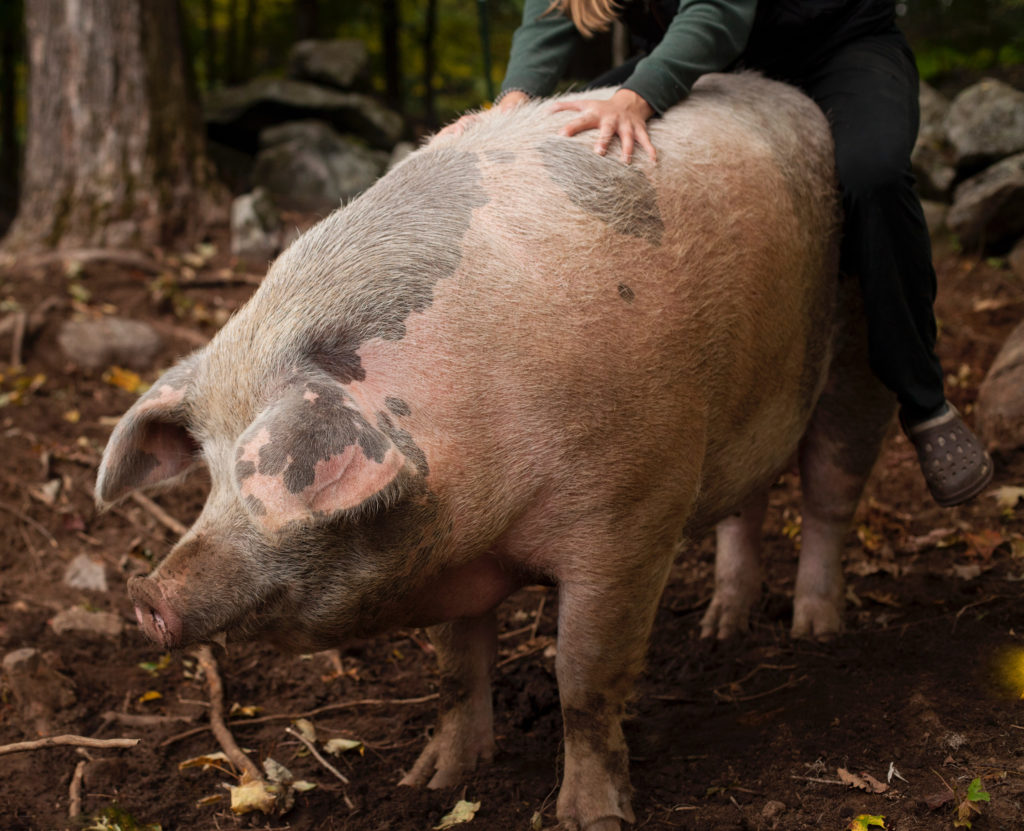
My recommendation is that if you think your sow is in standing heat, check her at minimum morning and night. Boar scent is a very useful tool as well, and a spray to the nostrils before testing can help you get a more accurate reading and stronger stand.
If I get any kind of reaction out of Big Marie when I check her reflex, this is when is when I swing up on her back for the ultimate test. If she immediately balks, she isn’t ready. If she starts walking around a little but doesn’t hate that I’m up there she’s close. If she immediately locks up, I know it’s go time!
If this is your first time heat checking your gilt/sow it may take you a few cycles to learn what her “normal” is and to pinpoint exactly when she goes into standing heat. So, start paying close attention a few months ahead of time so you can not only know what to look for, but also properly time ordering semen. Knowing this is important because the onset of standing heat is essentially when the clock starts for artificial insemination, and then comes the farrowing!
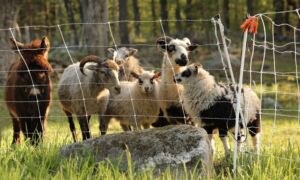
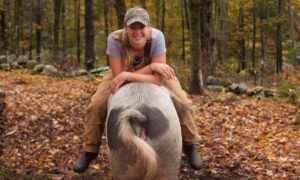
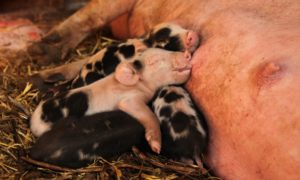
Pingback: Artificially Inseminating a Pig | The Modern Day Settler
My Landrace and Large white gilts are seven months old Gilt are yet in heat? What can be done or which way forward?
Could be many, many, reasons. Could be that she isn’t physically mature (big) enough, she has weak/silent heats, you are just missing her cycle, environmental factors like extreme heat – there are many possibilities.